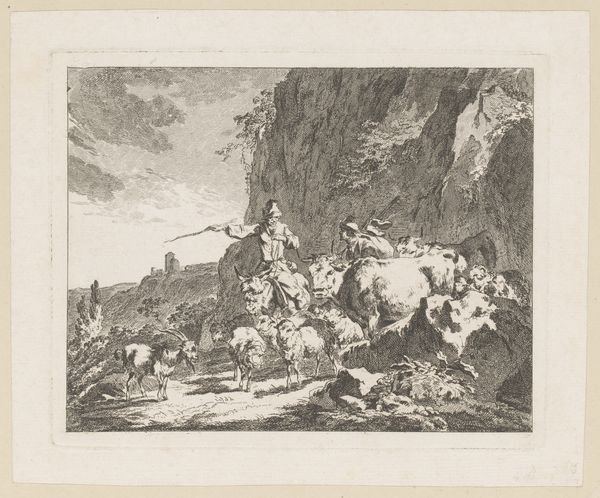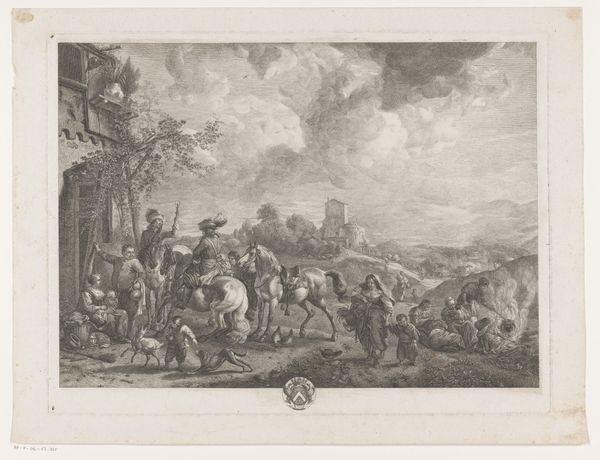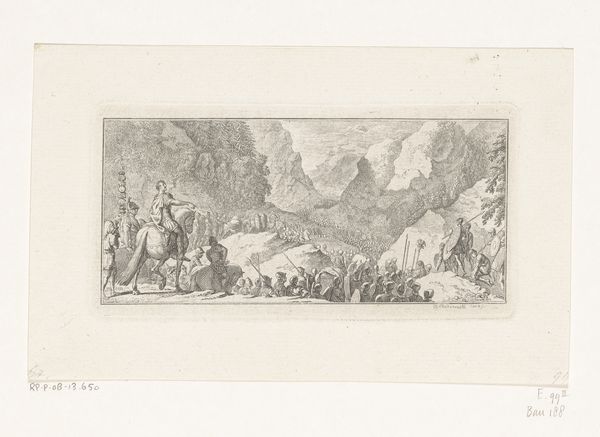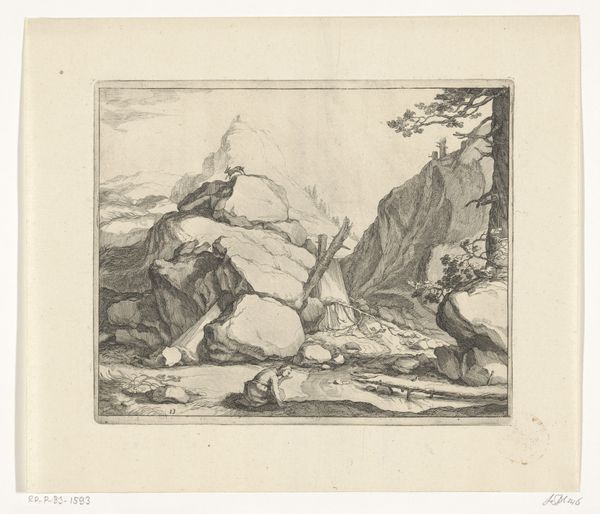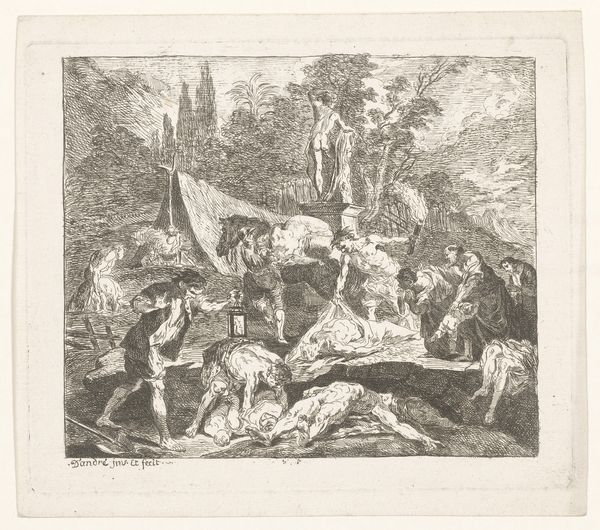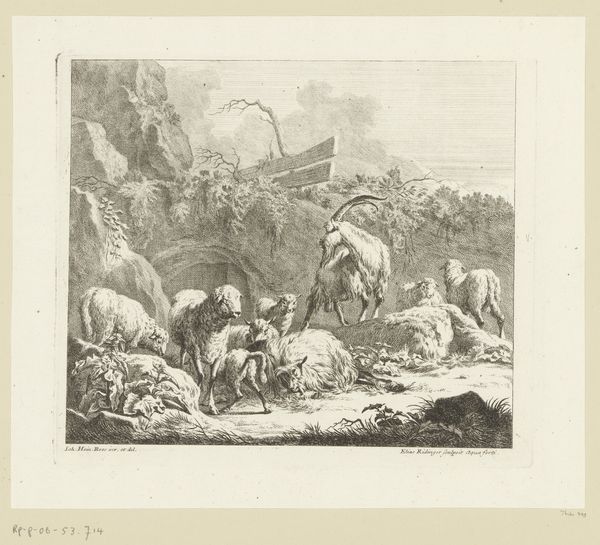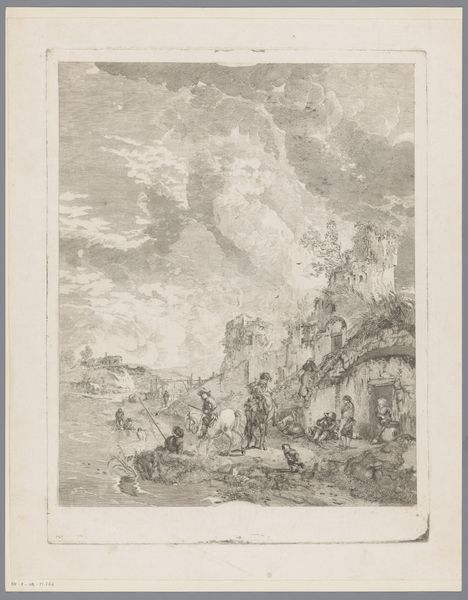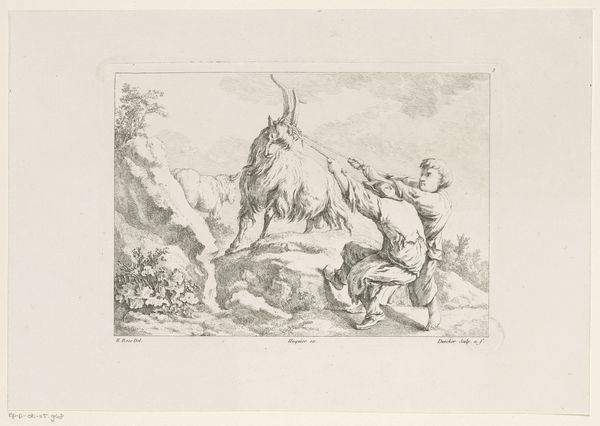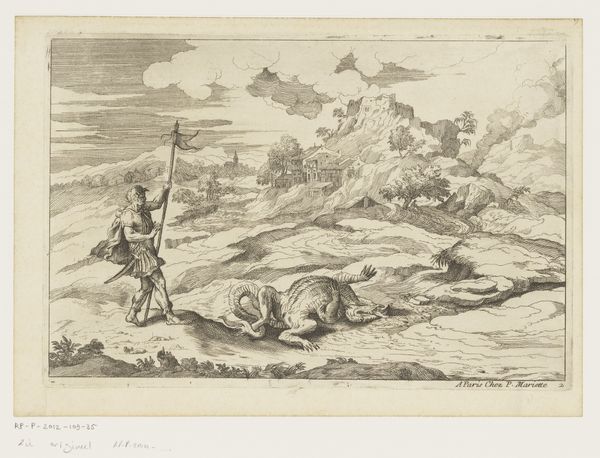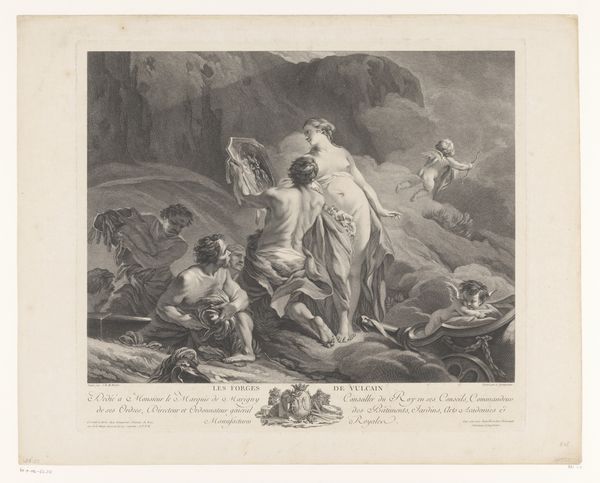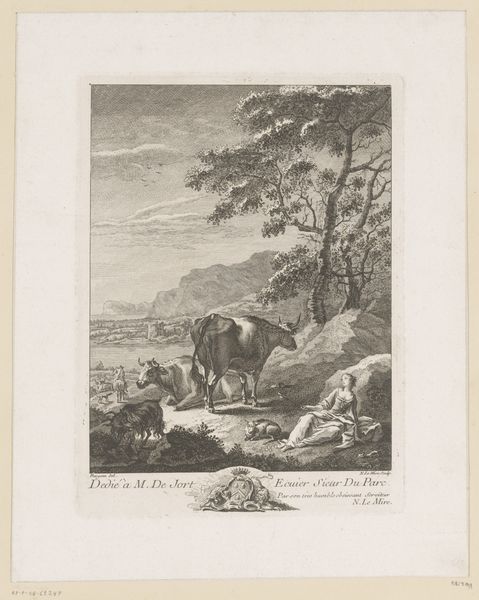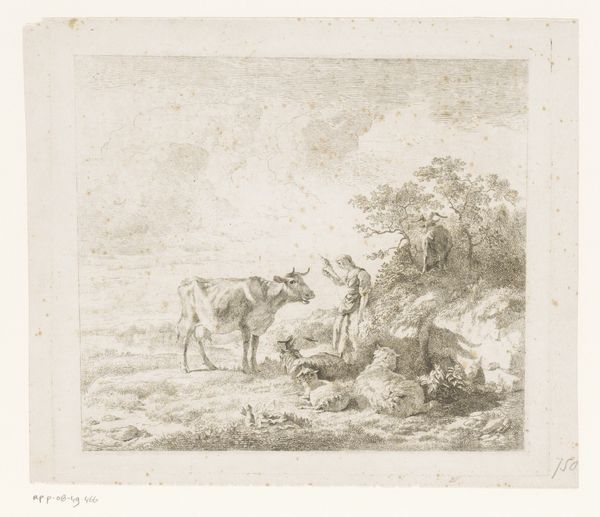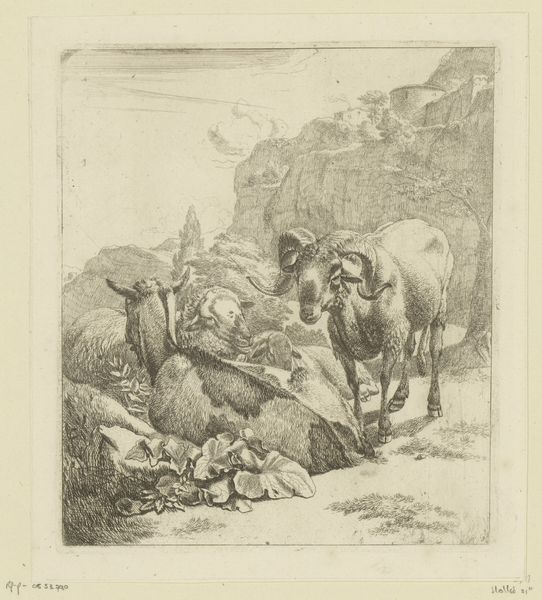
print, etching, engraving
#
baroque
# print
#
etching
#
landscape
#
figuration
#
line
#
genre-painting
#
engraving
Dimensions: height 171 mm, width 218 mm
Copyright: Rijks Museum: Open Domain
Curator: This etching, "Rustende herders met kudde in een landschap," or "Resting Shepherds with Flock in a Landscape," dates from somewhere between 1650 and 1750. It’s an anonymous work held here at the Rijksmuseum. Editor: There's a serenity here, even a sort of dreamy stillness. The way the figures are arranged, it's very peaceful. You have a large dark mountain on the left with a mass of people and animals clustered on a slope to the right and then, more distant, there are a couple more hills on the horizon under a cloudy sky. Curator: Given that it is a print from the Baroque era, consider how labor figured into both the image and its manufacture. Prints like these had a role in distributing landscape themes, meeting growing demands for visual representations of the world that people might not otherwise see. Also, look at the composition of this specific print, which seems quite traditional, and think of the etching or engraving that produced these clean lines. Editor: What strikes me is how this idyllic pastoral scene taps into our enduring longing for simplicity and connection with nature. Shepherds have, since antiquity, been symbols of spiritual guidance, but it’s the image of the "flock," I believe, that would have been most familiar to the contemporaries of the artist, given the common prevalence of religious themes featuring Christ as a shepherd protecting his sheep. Curator: But it is a landscape created and disseminated by industrial means, a commodification of the pastoral that, ironically, fueled further disruption of the natural world, and served an ever-growing merchant class. I’m wondering who specifically commissioned this piece and where they stood in Dutch society at the time it was manufactured? Editor: Even if mass-produced, this print still allowed individuals a moment of quiet contemplation, offering a visual space for reflecting on themes of care, community, and the rhythms of life. The shepherd, perhaps a symbol for humans generally, watches over all these themes, if ever so passively. Curator: Ultimately, this print underscores the complex interplay between our desires for authenticity and the realities of a rapidly changing world, mass production in the 17th century serving similar ends to today’s digital image overload, but just in a different medium, and available to different consumer groups. Editor: Agreed. The symbolism in the artwork also points to some uncomfortable truths; we seek simplicity in an age of over-consumption.
Comments
No comments
Be the first to comment and join the conversation on the ultimate creative platform.
